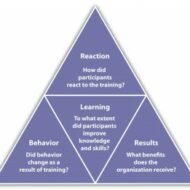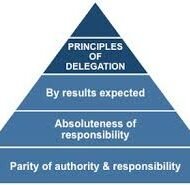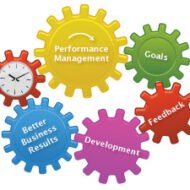Posted by Managementguru in Human Resource, Principles of Management, Project Management, Training & Development
on Mar 22nd, 2014 | 0 comments

Assessment centers Some companies run a series of prolonged selection procedures (assessment centers) each lasting one or two days, and sometimes longer. Usually these are after the first round of interviews and before making the final selection, but they can be used as an initial selection process. They are usually held either on company premises or in a nearby hotel, and are measured by many employers to be the fairest and most accurate method of selecting staff. This is because they give a number of different selectors a chance to see you over a longer period of time than is possible with a single interview, and the chance to see what you can do, rather than what you say you can do, in a variety of situations. Assessment Centers typically include a number of elements. Social/informal events, where you get a chance to meet variety of people, including other candidates, the selectors, recent graduates and senior management. This is an excellent opportunity for you to find out more about the organization and to ask questions in a more informal or social setting. Information sessions, which provide more details about the organization and the roles available. Listen carefully, as it is likely to be more up-to date than your previous research. If you are unclear about anything, ask. It is often good to have a question prepared for these sessions, but make sure it is a sensible question and not one that has already been covered. Asking inappropriate questions just to get noticed does not impress the selectors. Tests and exercises designed to exhibit your potential. Selectors at assessment centers measure you against a set of competencies, and each exercise is carefully designed to assess one or more of these areas. Do not worry if you think that you have performed badly at any stage; it is more than likely that you will have the chance to compensate later on. It is also worth remembering that you are being assessed against these competencies and not against the other candidates, so rather than trying to compete against them, make sure that you demonstrate the qualities the organization is looking for. Remember that assessment centers are extremely expensive to run and that you have already come a long way to be invited – you may have as much as a one in six chance of being selected. Vestibule Training Vestibule training creates a miniature of the department for which the training program is carried on. It utilizes machinery similar to that in operation on the production floor. Qualified instructors, usually highly skilled operators or supervisors, are provided to conduct the program in this special section. Here the new employees are given a course of training in the particular machines they will be required to use and on the exact work they will do when they become a part of the regular production force. {In the early 1800s, factory schools were created, due to the industrial revolution, in which workers were trained in classrooms within the factory walls. The apprentice system was inadequate due to the number of learners that had to be trained as the machines of the Industrial Revolution increased the ability of the factory to produce goods. The factory owners needed trained workers quickly because there was a large demand for the produced goods. Towards the end of the 1800s, a method that combined the benefits of the classroom with the benefits of on-the-job training, called vestibule training, became a popular form of training. The classroom was located as close as conditions allowed to the department for which the workers were being trained. It was furnished with the same machines...

Posted by Managementguru in Human Resource, Organisational behaviour, Principles of Management
on Mar 19th, 2014 | 0 comments

You Can Delegate Authority, but Not Responsibility Responsibility of a Manager: A corporate manager is accorded with the huge responsibility of leading his subordinates in the right direction, by giving proper insights on the tasks to be accomplished. The success rate depends on how well he delegates his authority down the line to get things done. The art of delegation results not only in down sizing his work pressure but also in the empowerment of subordinates, that elevates them to a higher plane of understanding and achievement. An Excerpt from The Art of Delegation: Developing This Essential Managerial Skill Delegation helps you handover the authority of certain tasks to capable team members so that you free up your time to work on more pressing issues. But you still remain responsible to get those completed in proper way. Hence it is essential to have a status check or communication with the team member on regular basis. Accountability of Subordinates: The subordinates, when entrusted with the responsibilities of performing a task by themselves and the necessary authority to make decisions within the area of their assigned duties, are obliged to perform. The necessary assistance and training for the new assignment has to be planned for, by the manager to make them perform as per the expected standards. The thing is right people should be chosen for the entrusted job. They should possess the zeal and enthusiasm to deliver the desired output. Some people perform beyond expectations and they should be rewarded with additional responsibilities. Whatever the case may be, it is a wise thing to delegate simple assignments at the initial stage, and proceed with more challenging jobs depending upon the caliber of the incumbent. THE ENTREPRENEUR’S GUIDE TO DELEGATION Clear and Clever Delegation: Clear and clever delegation facilitates to build a formal organization structure, where the subordinates are trained well and they look up to the manager for direction and guidance. Although the authority is delegated, the manager is held accountable and answerable to the management for the performance output or the end result. Some managers hesitate to delegate, just for the reason that their weaknesses might get exposed. Some don’t have confidence in their subordinates. Some even fear that they might lose their power if the subordinate is very shrewd and exceeds the expectations. Managers fail because of poor delegation; the reasons being personal attitude of managers in delegating authority. Let us understand some of the basic principles to be adhered to while delegating: The authority delegated to subordinates should be adequate enough to ensure their ability to accomplish the expected results. Authority can be delegated but responsibility can never be delegated. Responsibility of subordinates is “performance” and that of managers is “responsibility for the action of their subordinates”. One cannot be held responsible for a task if he has only limited authority. There need to be a balance between authority and responsibility. The presence of a single superior will invoke greater feeling of personal responsibility among the subordinates. Lack of receptiveness on the superior’s part will incur greater loss in terms of performance and efficiency. Instead, a manager should develop a trustful attitude towards his subordinates and should have the patience to explain the policies, objectives and guidelines and give sufficient authority to perform a duty. HOW WELL EMPLOYEES KNOW ABOUT YOUR ORGANIZATION? Although initially the efforts taken to train a subordinate is time consuming, the more empowered he becomes, less is your time taken to accomplish the enterprise objectives. The superior must be able to create a climate of mutual trust and goodwill, to make delegations effective in the light of expected...

Posted by Managementguru in Business Management, Human Resource, Motivation, Organisational behaviour, Principles of Management
on Mar 10th, 2014 | 0 comments

Employee Morale – Role and Effect What is Morale? Morale is a word that conveys different meaning to different people. It might imply the following meanings: 1. Mental Attitude or Mind set from a psychologist’s perspective 2. A feeling of togetherness from an individual’s point of view 3. Group consent in terms of a business environment etc. Morale can be defined as ” an attitude of mind which conditions how well or how badly duties are performed”- W.H.Walley It can also be defined as ” the collective attitudes of workers towards one another, the employer, the management, or their work”-J.C.Denyen Morale is ” the capacity of group of people to pull together persistently and consistently in pursuit of a common purpose”-Dr.Deighton Morale is thus the undercurrent in an organisation that determines the performance levels of the employees as it dictates employees’ enthusiasm, voluntary conformance with regulations and orders and willingness to co-operate with fellow workers to accomplish the enterprise objectives. Poor morale is evident from in-subordination, discouragement and dislike of job, company and associates. Nature of Morale What it is? : Emotional by nature , a state of well- being and an attitude of mind. What it does? : Directly related to quality of work, enthusiasm, motivation, productivity, discipline, co-operation and initiative. Where it resides? : In the minds, attitudes and emotions of employees as individuals and as groups. Whom it affects? : Employees and executives during their interaction and ultimately the customers and the community. What it affects?: Willingness to work and placing the enterprise objective behind self interest. To summarise, the ill effects of Bad Morale would be Reduced productivityIncreased absenteeismAntagonism towards managementToo much of complaints and grievancesIncreased employee turn-overFriction between employeesAlcoholismAccidentsIncreased lethargy In contrary High Morale leads to Willing co-operation towards enterprise objectivesLoyalty to the managementGood behaviour in conformance with the rules and regulationsStrong and coherent groups leading to organisational staminaPrioritising jobs and placing self interest behind organisational objectivesIncreased sense of participationPride in organisation Picture Courtesy: extramadness.com Ways to Improve Employee Morale From the workers’ point of view: Fair compensation and bonusSatisfactory working conditions conforming to safety and securityTreated with dignityEfficient and amiable leadershipScope for expressing their views for improvementAcceptable working hoursEnsuring economic security From the management’s view point Co-operation from the employeesStability of tenureIncreased productivityLow cost per unitLoyalty of the workers Is it possible to measure Employee Morale? Level of productivity: When the morale is low due to different reasons, higher is the chance of absenteeism, accidents and grievances since the employees try to overlook their responsibilities towards the organisation. Therefore it is the responsibility of the management to settle and score issues relating to employees or unions then and there to avoid those issues blowing out of proportion. Morale Surveys These are generally conducted by individual organisations to find out if the employees are satisfied with their job and task and how they feel about it. This is considered to be a fairly important measure to gauge the kind of relationship the employees have with the management. Surveys also indicate whether the channel of communication is open between the superiors and sub-ordinates and serves as an emotional release for the workers to express their real feelings. Types of Morale Surveys: Objective Surveys: Objective type of questions are given to the employees for answering but the flaw is that, the management representative writes the answers and this does not give a chance for the workers to express their feelings. Descriptive Surveys: Here the employees write their answers to queries asked which are more descriptive in nature and reflects the actual feelings of each individual. Projective Surveys: Sometimes psychological tests are conducted to bring out the hidden feelings from tight lipped employees or who fear the management. The management must be aware of the following morale...

Posted by Managementguru in Business Management, Organisational behaviour, Principles of Management, Training & Development
on Mar 1st, 2014 | 0 comments

Performance Appraisal Performance Appraisal is considered to be the most significant and indispensable tool for an organization. It is a measure of the employees’ performance levels in terms of the specific job’s requirement. It is a process employed for the purpose of placement, selection for promotions, providing financial rewards and other actions which require differential treatment among the members of a group. Purpose of Performance Appraisal Douglas McGregor says “Formal appraisal plans are designed to meet three needs, one of the organization’s and the other two of the individual namely, Performance appraisal methods facilitate systematic judgments to decide on the salary increases, transfers, demotions or terminations. They serve as a yard stick for an employee as to where he stands in the performance rating queue in the eyes of management and how he needs to adapt or improve himself regarding behavior, attitude, skills or job knowledge. They are used as a means to train and counsel each and every employee by the respective superiors. Performance appraisal can also be termed as Merit rating Behavioral assessment Employee evaluation Personnel review Progress report Staff assessment Service rating. According to Levinson, it definitely provides adequate feedback to each individual for his performance and also serves as a means for changing behavior. Prime Objectives of Performance Appraisal: Helps to maintain man power inventory of an organization which includes quantity and quality, to identify the training needs and aspirations of the work force. To determine increments and provide a reliable index in promotions and transfers to positions of greater responsibility. To improve individual as well as group development by determining the performance standard and motivating the employees to perform well. Providing support to employees who are not able to focus and to bring them back into the groove. The Process of Evaluation: Establishment of performance standards. Communicating the same to employees. Aquiring information through personal observation and statistical reports from the respective departments. Appraising and judging the future potential growth and advancement. Identifying the deviation between the actual and standard performance levels. Discussion with the employee for subsequent improvement or corrective action. Appraisal Summary: 1. Personnel Background covering the following details are collected Age Family background Marital status Children Education Specialization and degrees Office held Work history Social accomplishments Honors and awards Professional or trade organization membership Publications Special limitations Family problems Hobbies and recreational activities 2. Nature of Work: Job performance and personal qualification Technical performance Level of motivation in current position Intelligence as reflected on the job Emotional stability Leadership skills 3. Overall Performance Rating: Recommended action Knowledge Skill Attitude Methods of Performance Appraisal: Traditional methods: These rely upon evaluating an individual’s creativity, intelligence, drive, dependability, leadership potential, initiative and organizing capability which are more of personal in nature. Modern methods: These include ranking method, graphic rating scales, forced choice description method, critical incident and 360 degree evaluation methods. The 360 degree appraisal method is employed in big corporate companies where the individual’s overall performance is appraised by his colleagues, boss, customers, suppliers and stake holders. Management by objectives, management by exception , self appraisal and human asset accounting are other methods used for appraisal. Problems that may arise during performance appraisal: Halo Effect: It is a tendency to let the assessment of an individual’s any one trait to influence the evaluation of that person on other specific traits. The Central Tendency problem: It assigns average rating to all the employees in order to avoid commitment. Similarity error: This occurs when the evaluator evaluates other persons based on ‘self perception’, that is if he perceives himself to be adventurous or daring he may evaluate others looking for that same trait which he possesses. How to make appraisal successful? The superior must be well trained and a composed person to judge without...

Posted by Managementguru in Human Resource, Training & Development
on Feb 28th, 2014 | 0 comments

Definitions of Human Resource Management: 1. “A series of integrated decisions that govern employer-employee relations. Their quality contributes to the ability of organisations and employees to achieve their objectives.” (Milkovich & Boudreau, 1997). 2. “Concerned with the people dimension to management. Since every organisation comprises people, acquiring their services, developing their skills, motivating them to higher levels of performance and ensuring that they continue at the same level of commitment to the organisation are essential to achieving organisational goal. This is true, regardless of the type of organisation: viz. government, business, education, health, recreation, or social action.” (Decenzo & Robbins, 1989). 3.”The planning, organising directing and controlling of the procurement, development, compensation, integration, and maintenance of human resource to the end those individual, organisational, and social objectives are accomplished.” (Flippo, 1984). 4. “The organisation function that focuses on the effective management, direction, and utilisation of people; both the people who manage produce and market and sell the products and services of an organisation and those who support organisational activities. It deals with the human element in the organisation, people as individuals and groups, their recruitment, selection, assignment, motivation, empowerment, compensation, utilisation, services, training, development, promotion, termination and retirement.”(Tracey,1994 ) Knowledge Workers Human resource management is therefore understood as the all significant art and science of managing people in an organisation. Increasing research output in behavioral sciences, new trends in managing ‘knowledge workers’ and advances in training methodology and practices have led to substantial expansion of the scope of human resource management function in recent years. HRM is not just an arena of personnel administration anymore but rather a central and pervasive general management function involving specialised staff as assistants to main line managers. Managing employee relationships is the role of the Human Resource department Human Resource Management is a process of valuing and developing people at work, this includes: Recruitment and selection Employee communication and engagement (participation) to increase employee retention Training and development Leadership WHAT IS YOUR GREATEST WEAKNESS Labour turnover & staff retention Labour turnover refers to the proportion of a workforce that leave during a period of time (usually one year) Labour turnover = number of staff leaving during the period x 100 average number of staff Staff retention refers to the ability of a firm to keep its workers. The disadvantages of having a large proportion of staff leaving each year include: The cost of recruiting replacement workers The cost of training the new workers Loss of productivity whilst replacements are found Loss of experienced workers Negative impact on reputation WHAT IS YOUR GREATEST STRENGTH Methods to control turnover: 1. Financial methods of motivation Bonuses Profit share Fringe benefits 2. Non financial methods of motivation Employee engagement and empowerment Training and development Promotion opportunities 3. Improved Human Resource Management procedures Four Fundamental Principles of HRM: Human Resource is the organisation’s most important asset; Personnel policies should be directed towards achievement of ENTERPRISE goals and strategic plans; Corporate culture exerts a major influence on achievement of excellence and must therefore be strengthened with consideration of employee welfare. Whilst integration of corporate resources is an important aim of HRM, it must also be recognised that all organisations are ‘pluralist societies’ in which people have differing interests and concerns, which they defend and at the same time function collectively as a cohesive group. →Evolution of...










